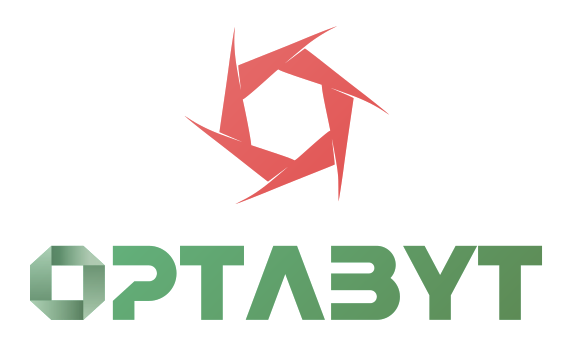
Table of Contents
ToggleNettsideutvikling i 2025: Den Moderne Veien til Digital Suksess
Table of Contents
Nettsideutvikling i 2025: Den Moderne Veien til Digital Suksess
Introduction
In today’s digital economy, a business’s first impression often comes through its website. Whether you run a small local company or a growing global brand, nettsideutvikling (website development) plays a crucial role in defining your online presence. But in 2025, building a website is not just about design—it’s about strategy, speed, and smart optimization.
A well-developed website combines technology, content, and user experience in a seamless way that satisfies both people and search engines. At Optabyt, our approach to nettsideutvikling focuses on SEO-driven architecture, clear navigation, fast performance, and responsive design to ensure your site stands out and delivers measurable results.
This guide explores every essential element of modern website development—from understanding search intent to optimizing for AI, voice search, and entity-based SEO.
1. Understand Search Intent
Every successful website starts by understanding what users are searching for—and why. Google’s algorithms prioritize content that best matches user intent.
Categorize Intent
There are four main types of search intent:
Informational: Users want to learn something. Example: “Hva er nettsideutvikling?”
Navigational: Users are looking for a specific brand or platform. Example: “Optabyt nettsideutvikling.”
Transactional: Users are ready to take action, such as hiring or purchasing. Example: “Kjøp nettsideutviklingstjenester.”
Commercial: Users compare options before deciding. Example: “Beste nettsideutvikling selskaper i Norge.”
Align Content with Intent
To perform well, your website should address all these intents:
Informational through blogs and guides
Transactional through service pages
Navigational through your homepage and contact pages
Commercial through case studies and pricing pages
When your content matches the right intent, users engage longer and Google rewards your site with higher rankings.
2. Comprehensive Keyword Research
Keyword research is the foundation of every SEO-driven nettsideutvikling strategy. It helps you understand how people search for your services.
Focus on Topic Clusters
Instead of targeting single keywords, build topic clusters around a main theme. For instance:
Pillar Page: “Nettsideutvikling i Norge”
Cluster Pages: “SEO optimalisering”, “Responsivt design”, “UX forbedring”, “WordPress nettsideutvikling.”
This structure improves internal linking and helps Google understand your site’s topical authority.
Identify LSI (Latent Semantic Indexing) Keywords
Include related terms that enhance the context of your content, such as:
“Webutvikling”
“Digital strategi”
“Frontend og backend”
“CMS systemer”
“Netthandel utvikling”
Target Long-Tail Keywords
Long-tail keywords bring high-intent visitors. For example:
“Hvordan lage en profesjonell nettside for bedriften min?”
“Billige nettsideutviklingstjenester i Oslo.”
Such keywords have lower competition and higher conversion potential.
3. Create Entity-Based Content
Search engines now understand concepts (entities) instead of just words. Entity-based content helps you build authority and appear in knowledge panels or featured snippets.
Incorporate Named Entities
Mention relevant brands and technologies, such as Google, WordPress, Optabyt, Figma, or Shopify. These create semantic connections that signal expertise.
Structured Data (Schema Markup)
Implement schema markup for:
Organization
Reviews
Articles
Local Business
This improves your visibility in search results with star ratings, FAQs, and quick info.
Entity Relationships
Interlink related pages to strengthen context. For example, your “SEO Optimization” page should link to “Content Marketing” and “Web Design,” forming a logical content ecosystem.
4. On-Page Optimization
On-page optimization ensures your website is both readable and technically aligned with SEO standards.
Semantic HTML Tags
Structure your pages using proper HTML hierarchy:
Use
<h1>for main titles with primary keywords like nettsideutvikling.Use
<h2>and<h3>for related subtopics.
This improves accessibility and SEO readability.
Use of Synonyms and Variations
Don’t repeat the same term. Use natural variations like “webdesign”, “nettutvikling”, and “digital plattformbygging” for better semantic depth.
Optimize Images and Multimedia
Compress large images for faster loading.
Use descriptive alt tags (e.g., Nettsideutvikling for bedrifter i Norge).
Embed explainer videos or motion graphics to improve engagement.
5. Content Optimization for Context
High-quality, fresh, and informative content signals authority and drives conversions.
Content Depth and Quality
Create long-form content (1500–3000 words) that answers every possible question users might have about your topic.
Use data, visuals, and examples to add credibility.
Interlinking
Strategically link between blog posts, service pages, and FAQs. This distributes SEO value and keeps visitors on your site longer.
Content Freshness
Update your pages regularly with new case studies, updated statistics, and design trends. Search engines reward up-to-date information.
6. Natural Language Processing (NLP)
Modern SEO is powered by AI and NLP. These algorithms understand the meaning behind words, not just their presence.
Featured Snippets
Write concise, 50–60 word answers to common questions. For example:
Q: What is nettsideutvikling?
A: Nettsideutvikling er prosessen med å designe, kode og optimalisere nettsteder for bedre brukeropplevelse og søkemotorrangering.
Optimize for Conversational Search
Use natural language—write like you’re having a friendly conversation with your readers.
Question-Based Subheadings
Include questions like:
“Hvordan fungerer nettsideutvikling?”
“Hvorfor er SEO viktig for nettsider?”
This increases your chance of appearing in People Also Ask results.
7. Enhance User Experience (UX)
A visually appealing and easy-to-navigate website retains visitors longer, which signals quality to Google.
Mobile-First Approach
Over 70% of internet traffic comes from mobile devices. Ensure your site is responsive, fast, and intuitive on smaller screens.
Fast Loading Times
Use:
Caching and CDN services
Image compression
Lazy loading
Minified code
Speed directly affects SEO ranking and bounce rates.
Clear Navigation
Design simple menus, breadcrumbs, and internal links so users find information effortlessly. Good UX reduces frustration and increases conversions.
8. Voice Search Optimization
Voice assistants have changed how users search online. Optimizing for voice search is now essential.
Natural Language Keywords
Focus on question-style queries like:
“Hva koster nettsideutvikling i Norge?”
“Hvilket selskap tilbyr best nettsideutvikling i 2025?”
Use FAQs
Create an FAQ section with short, clear answers. Voice assistants often pull results from these structured sections.
9. Monitor & Adapt
SEO and web technologies evolve continuously. Monitoring performance helps you stay ahead.
Track Semantic Performance
Use Google Search Console, Ahrefs, and SEMrush to analyze keyword rankings, impressions, and entity performance.
Analyze SERP Features
Check if your site appears in:
Featured Snippets
Knowledge Graph
Image Packs
People Also Ask boxes
Adapt Your Strategy
When Google updates its algorithm, review your content and update accordingly. Continuous improvement ensures long-term stability.
10. FAQs About Nettsideutvikling
What is nettsideutvikling?
It’s the process of creating, designing, and optimizing websites for better performance and search visibility.Why is nettsideutvikling essential for businesses?
A professional website builds credibility, improves SEO, and converts visitors into customers.What’s the difference between web design and web development?
Web design focuses on appearance, while web development focuses on functionality and coding.Which platforms are best for nettsideutvikling?
WordPress, Shopify, and custom-coded platforms depending on your business goals.How much does nettsideutvikling cost in Norway?
From 10,000 to over 100,000 NOK depending on complexity, integrations, and design.Can SEO improve my website ranking?
Yes—SEO helps your website appear higher in Google’s search results, attracting organic traffic.How often should I update my website?
Every 6–12 months to include new features, fix errors, and stay visually current.Does Optabyt offer custom nettsideutvikling?
Yes, Optabyt specializes in customized, SEO-friendly websites built for scalability.What is responsive web design?
It ensures your website looks and functions perfectly on all devices—mobiles, tablets, and desktops.How can Optabyt help my business grow online?
Optabyt offers end-to-end web solutions—design, SEO, marketing, and analytics—to help you achieve measurable growth.
Conclusion
Nettsideutvikling is no longer just a technical process—it’s a strategic investment in your brand’s future. A well-built website improves visibility, builds trust, and drives conversions. By focusing on search intent, structured content, technical performance, and user experience, businesses can stay competitive in 2025’s fast-changing digital world.
At Optabyt, we combine modern design, SEO expertise, and technology to develop websites that perform, engage, and convert. Whether you need a simple business site or a full-scale e-commerce solution, we’re here to turn your vision into a powerful digital presence.
👉 Partner with Optabyt today and take your nettsideutvikling to the next level.
